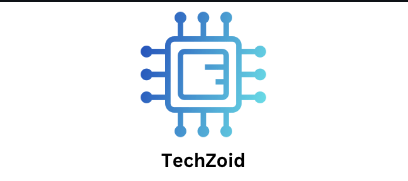Recognizing the Function of Prop Firm Tools
Prop firm trading entails trading the company’s capital in exchange for a portion of the earnings. Since performance is crucial, traders must have access to the greatest tools available for market analysis, trade execution, and portfolio management. Whichever trading strategy you prefer—scalping, swing, or algorithmic—the tools you use should be quick, dependable, accurate, and flexible. Having the correct set of trading tools might be the difference between regular profits and lost chances.
1. Usability and Platform Compatibility
The trading platform itself should be taken into account initially. Prop businesses frequently employ tools like TradingView, cTrader, and MetaTrader 4/5 (MT4/MT5). But not all platforms are supported by every prop company. Verify that the tools you are considering meet the needs of the company.
Usability is just as crucial. You may be slowed down by an interface that is too complicated or crowded. Select instruments that are easy to use and adaptable. A responsive interface, hotkeys, adjustable layouts, and one-click trading are all characteristics to look for. Make sure the platform allows you to trade FX, equities, commodities, and cryptocurrency all from a single interface if you are interested in multi-asset trading.
2. Technical Analysis and Advanced Charting
Most trading methods are based on technical analysis. Select a trading tool that offers a variety of technical indicators, sketching tools, and sophisticated charting choices. Community-shared indicators, strategy testers, and sophisticated charting solutions are the hallmarks of platforms such as TradingView.
Additionally, take into account tools that let you evaluate past data and backtest tactics. You should be able to optimize tactics and replicate trades using a competent prop firm trading tool without having to risk real money. This aids in honing strategies prior to their real implementation.
3. Execution Quality and Speed
Milliseconds come into play with prop trading. A good trading tool should have low slippage and quick execution speeds. Profitability may be impacted by latency, or the speed at which your order enters the market, particularly for scalpers and day traders.
Select technologies that work with quick servers, ideally situated near important financial markets. Because they shorten the time it takes to execute transactions, tools with a direct market access (DMA) function frequently have an advantage. Inquire with the prop firm about the sorts of order types (market, limit, stop, etc.) that are offered and whether their tools facilitate low-latency trading.
4. Features of Risk Management
Prop trading relies heavily on effective risk management. The finest trading tools should have built-in risk management tools like margin calculators, trailing stops, take-profit settings, and automated stop-loss.
Risk dashboards are offered by certain sophisticated systems to track open trades, drawdown, leverage usage, and position size in real time. These characteristics are crucial to satisfy the prop firm’s risk requirements and prevent needless disqualifications or funded account loss.
5. Combining News and Analytical Tools
In professional trading, real-time data and analysis are essential. Choose trading tools that are compatible with sentiment analysis platforms, market news feeds, and economic calendars. Platforms that link to news outlets like Reuters or Bloomberg, for instance, might provide traders with an advantage during significant occurrences.
Custom alerts, bots, and trading algorithms can also be enabled through interface with AI-powered products or APIs. Traders that want to automate a portion of their workflow or trade quantitatively will find this very helpful.
6. Price, Accessibility, and Licensing
Some trading tools are free, but others are more expensive. While some prop firms demand traders to supply their own equipment, others incorporate high-end tools in their offerings. Consider what the company’s bundle includes and what you might need to buy individually.
More flexibility is provided by mobile-accessible tools or cloud-based platforms, which enable you to keep an eye on transactions while on the road. When choosing a tool, always take accessibility into account, particularly if you travel frequently or transition between devices.
Conclusion
Selecting the finest prop firm trading tools involves more than simply picking the most widely used platform; it also involves choosing tools that fit your trading preferences, risk tolerance, and career objectives. Pay attention to integration, risk management, speed, analysis capabilities, and usability. Keep in mind that the appropriate tools serve as a safety net and a rung on the ladder to success in the fast-paced world of prop trading. Even the finest technology is only as good as the trader using it, so make wise decisions and maintain flexibility.
